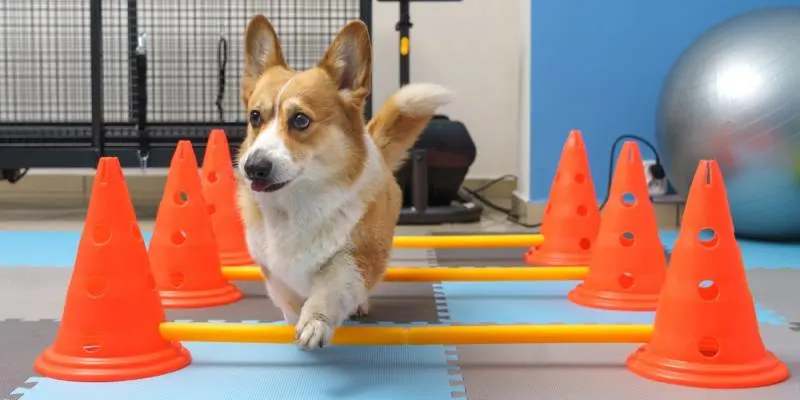Corgis are among the most popular of all modern dog breeds. It is their friendly personalities, short legs, and low center of gravity that make them so attractive to many people. Unfortunately, these same traits can also be linked to a condition known as Exercise-Induced Collapse (EIC) in corgis.
What is EIC? Is it dangerous for your corgi? How can you identify the signs and symptoms of EIC in your pet? What treatments are available to help prevent or lessen its effects? These questions and more will be answered in this article. Read on to learn more about Exercise-Induced Collapse (EIC) in corgis.

So, What is Exercise-Induced Collapse (EIC) in Corgis?
EIC is an inherited neurological disorder that affects corgis and other groups of dogs with short legs, such as the Labrador Retriever. The condition causes a sudden, temporary collapse of the hind limbs during or shortly after strenuous physical activity. It can occur when the dog is running, jumping, or playing. As the name implies, EIC is triggered by exercise and can range from mild to severe.
Is It Serious?
Yes, it can be very serious. Even though EIC episodes typically pass within minutes and the dog recovers quickly, it can still be alarming for pet owners to witness.
In more severe cases, the collapse may last longer and cause a temporary loss of muscle coordination or paralysis. If this happens, your dog will need prompt medical attention.
How Long Does It Last?
Generally, EIC will begin to affect a corgi after about five to twenty minutes of strenuous exercise. The episodes typically last for five to ten minutes and most dogs will completely recover within fifteen to thirty minutes.
In rare cases, the symptoms can progress to full-body weakness with low muscle tone (flaccid paralysis), confusion, loss of consciousness, seizures, and even death.

How Do You Identify The Signs and Symptoms of EIC?
The signs and symptoms of EIC can vary from dog to dog, but generally, it will cause a wobbly, uncoordinated gait that only affects the hind limbs.
During an EIC episode, your corgi may also display excessive panting and drooling, as well as appear disoriented or confused. Additionally, their eyes may roll back or dart to the side. It is important to note that dogs remain mentally alert during episodes of EIC, and they are not in pain.
If you suspect your corgi is experiencing an episode of EIC, it is best to stop their activity immediately and provide them with a comfortable place to rest until the episode passes.

What Treatments Are Available For EIC?
Unfortunately, there is no known cure for EIC. However, the condition can be managed and controlled through lifestyle changes and specialized veterinary care.
Your vet may recommend dietary adjustments to help keep your corgi in good physical shape and reduce their risk of experiencing an EIC episode. Additionally, you should avoid strenuous exercise during extreme temperatures or high humidity levels as these can worsen symptoms.
If your corgi continues to experience EIC episodes despite lifestyle changes and veterinary care, your vet may prescribe medication to help prevent them from occurring.
How to Care for a Corgi With EIC?
Caring for a corgi with EIC can be challenging, but it is important to remember that the condition is not life-threatening and most dogs will recover from an episode quickly.
It is important to provide plenty of rest between periods of activity and avoid strenuous exercise in extreme temperatures or humidity. Also, be sure to talk to your vet about dietary adjustments and medications that may help reduce the risk of an EIC episode.

Conclusion
Ultimately, Exercise-Induced Collapse (EIC) is a neurological disorder that harms corgis and other short-legged breeds. The condition could cause an unexpected, momentary breakdown of the back legs and be anywhere from mild to horrendous.
EIC has no cure, but it can be managed with lifestyle changes and specific veterinary care. Your corgi’s quality of life does not have to diminish because of this condition. With proper care and monitoring, you can help keep your corgi happy and healthy despite its condition.
Happy and healthy dogs make for happy and healthy owners!

